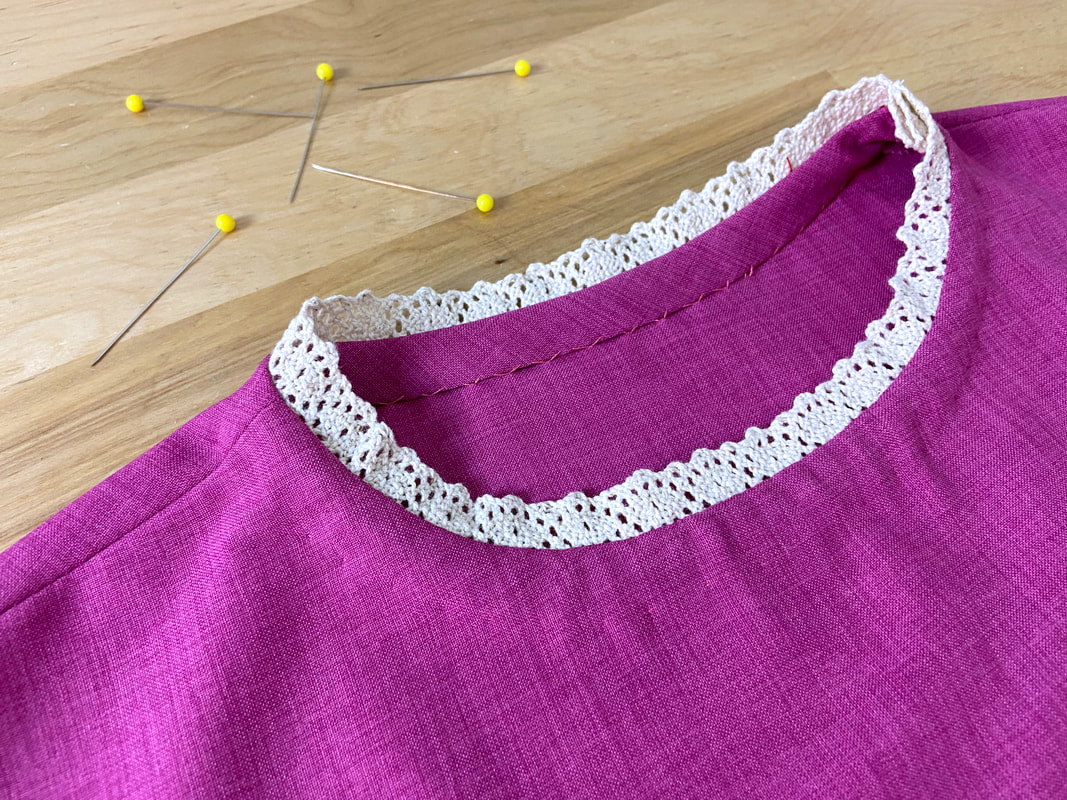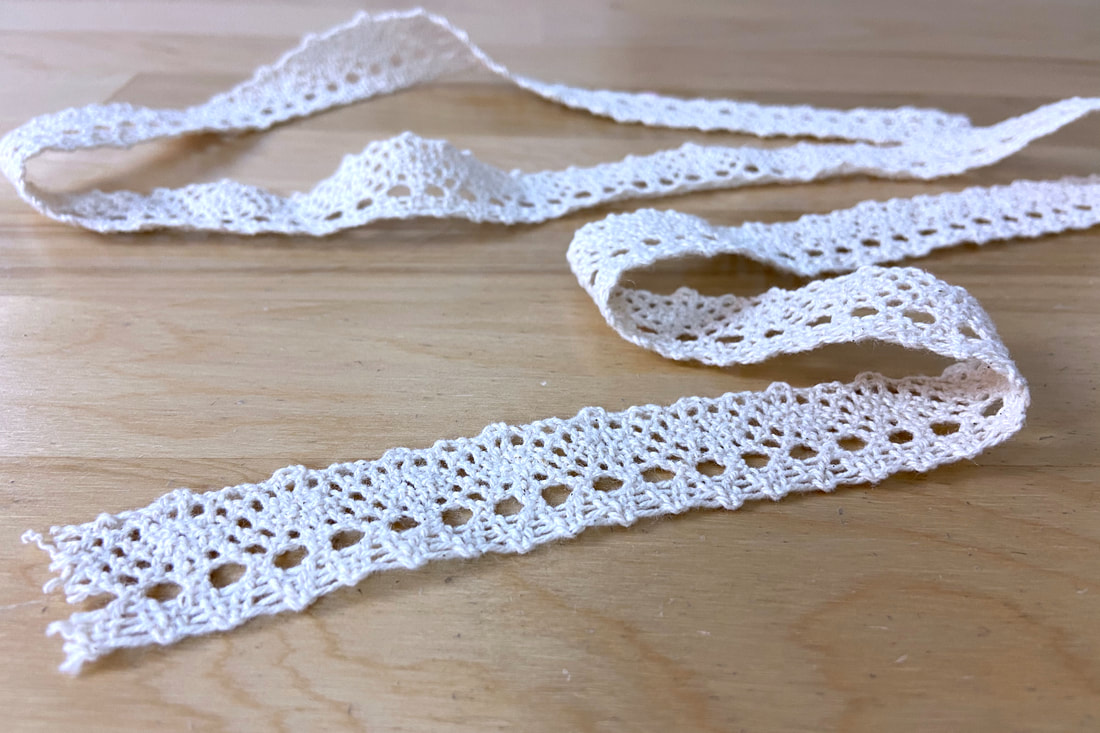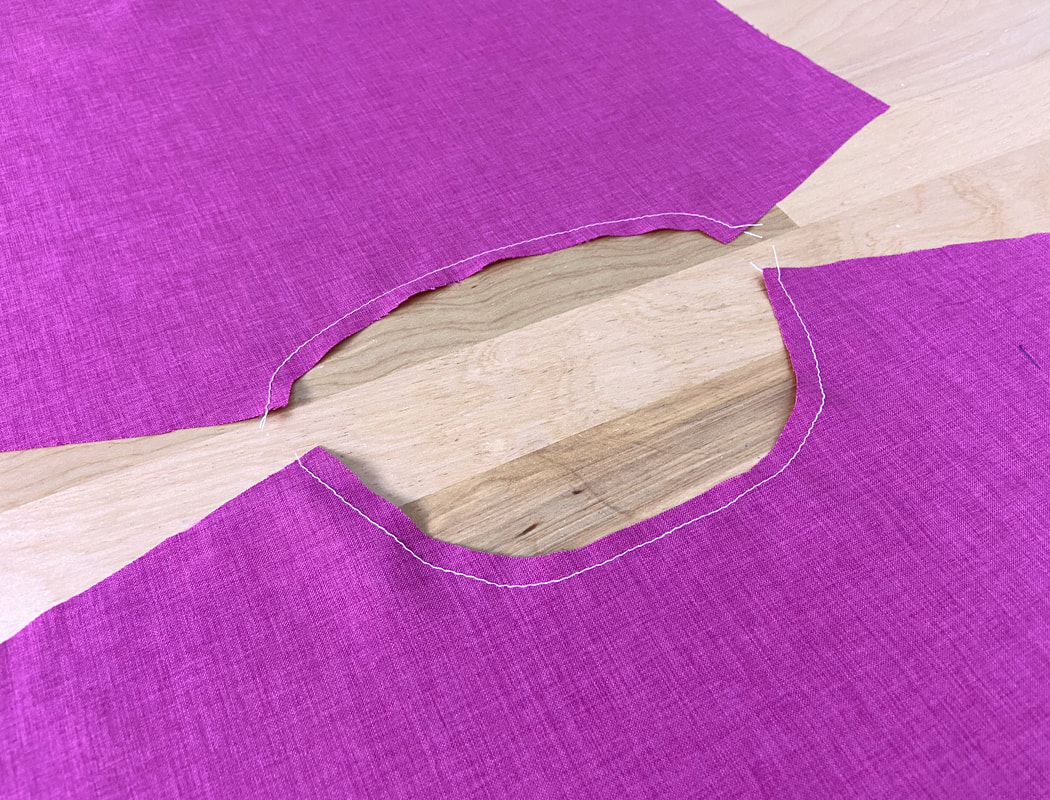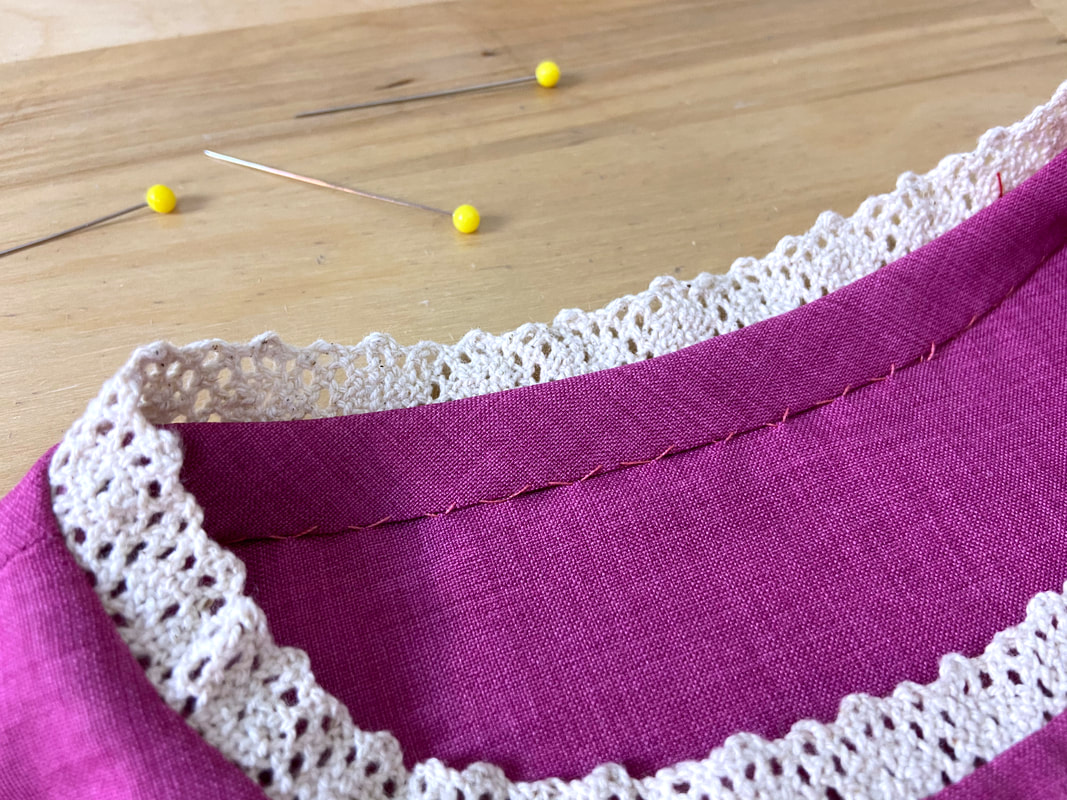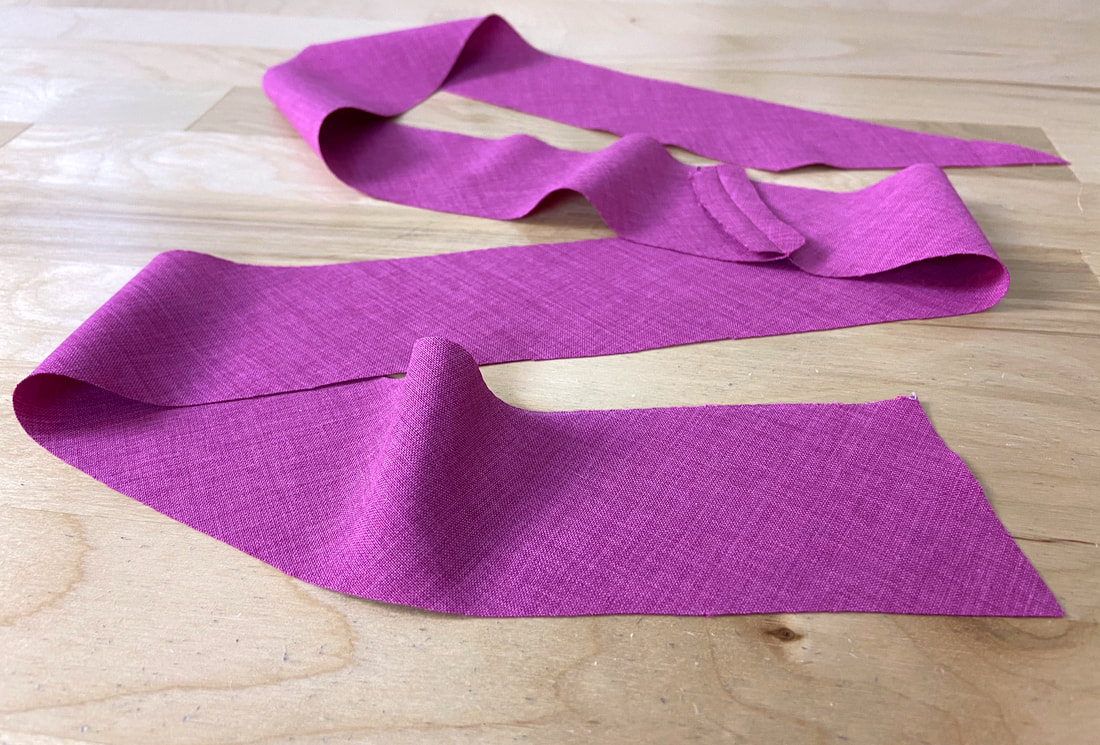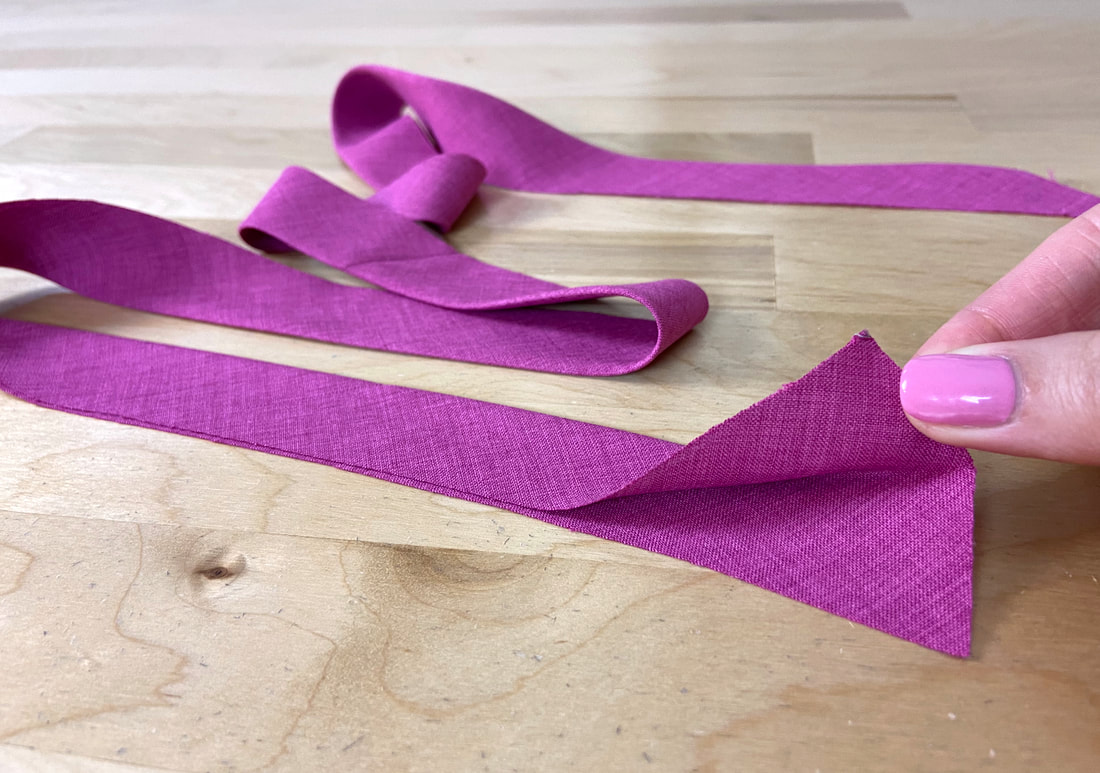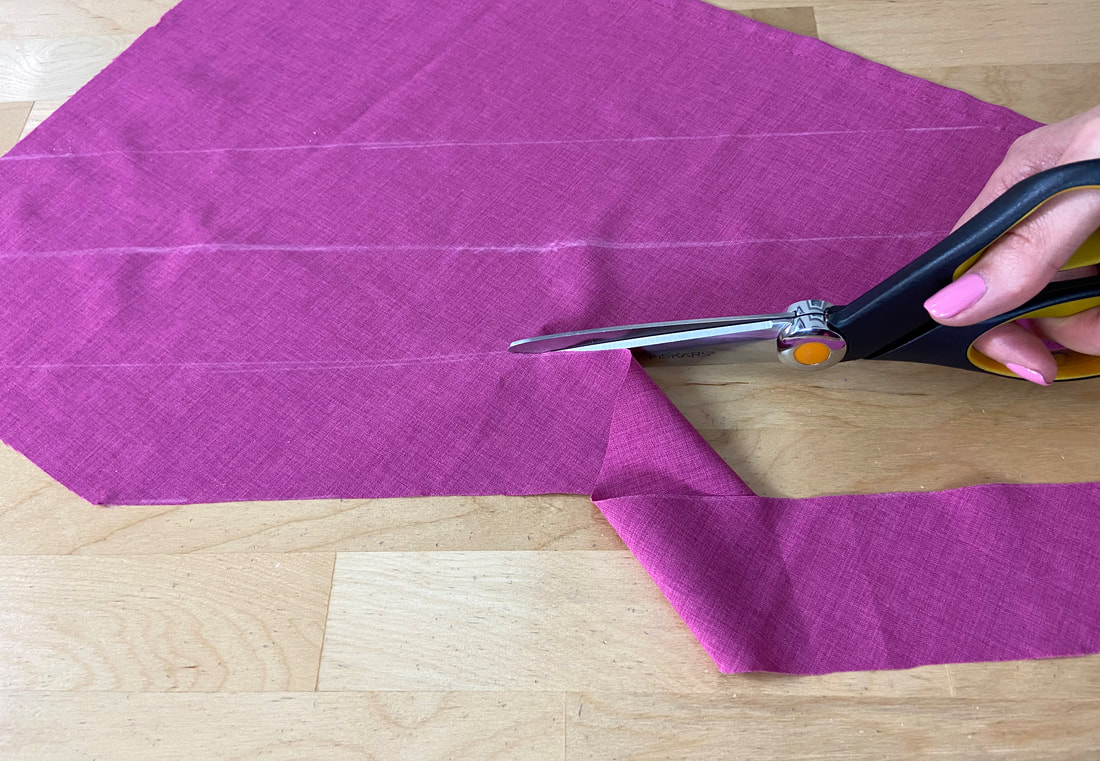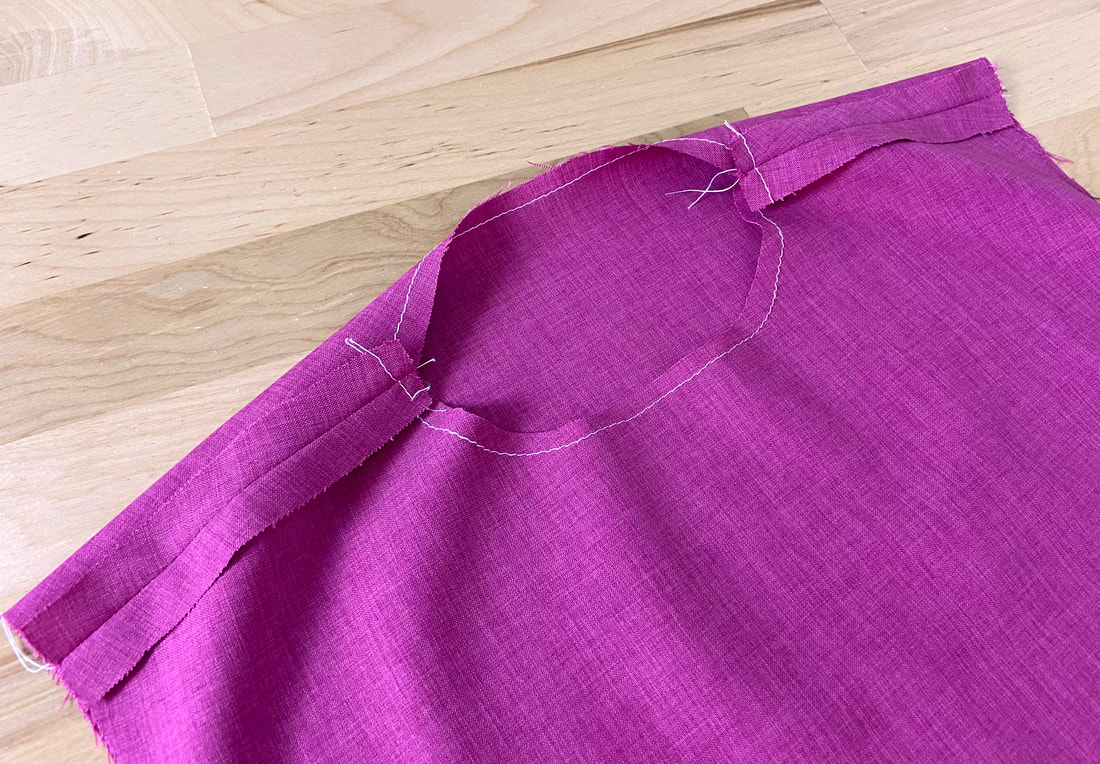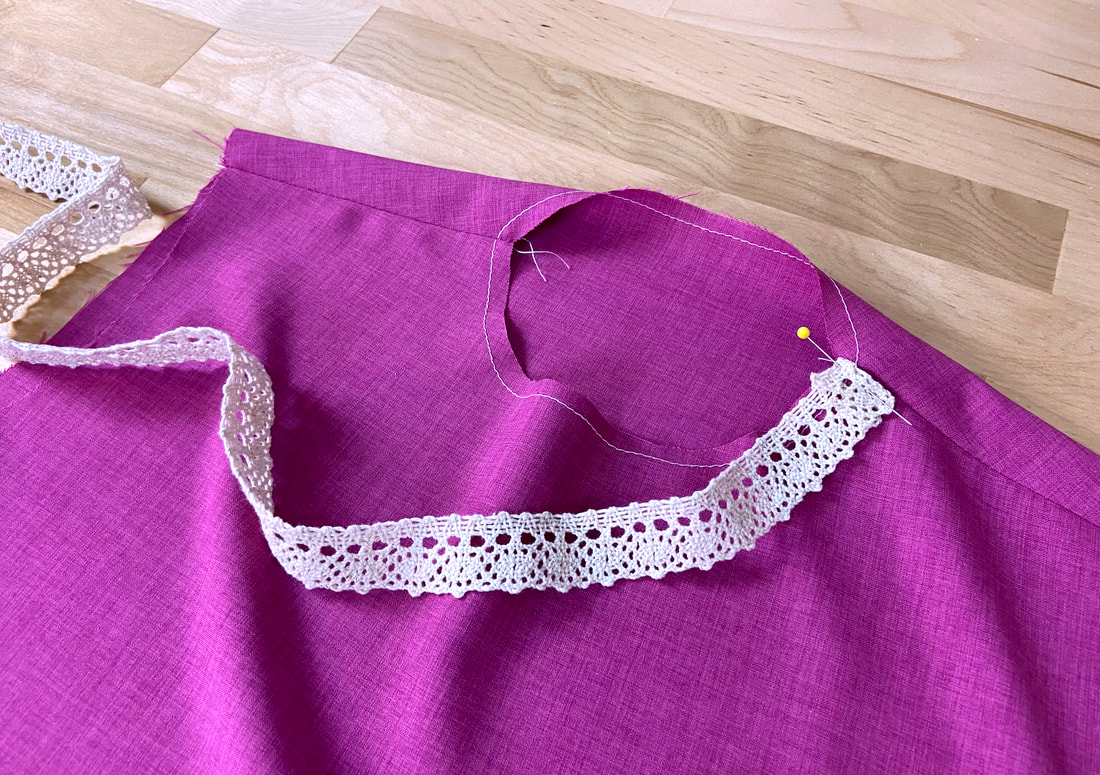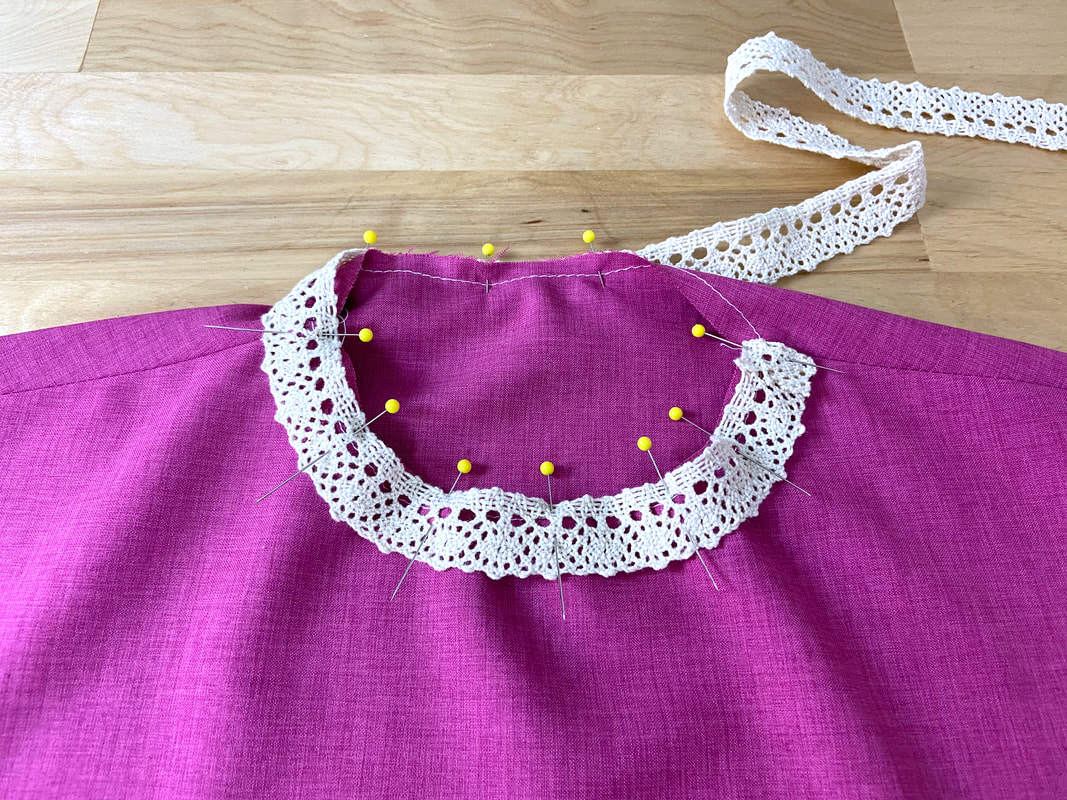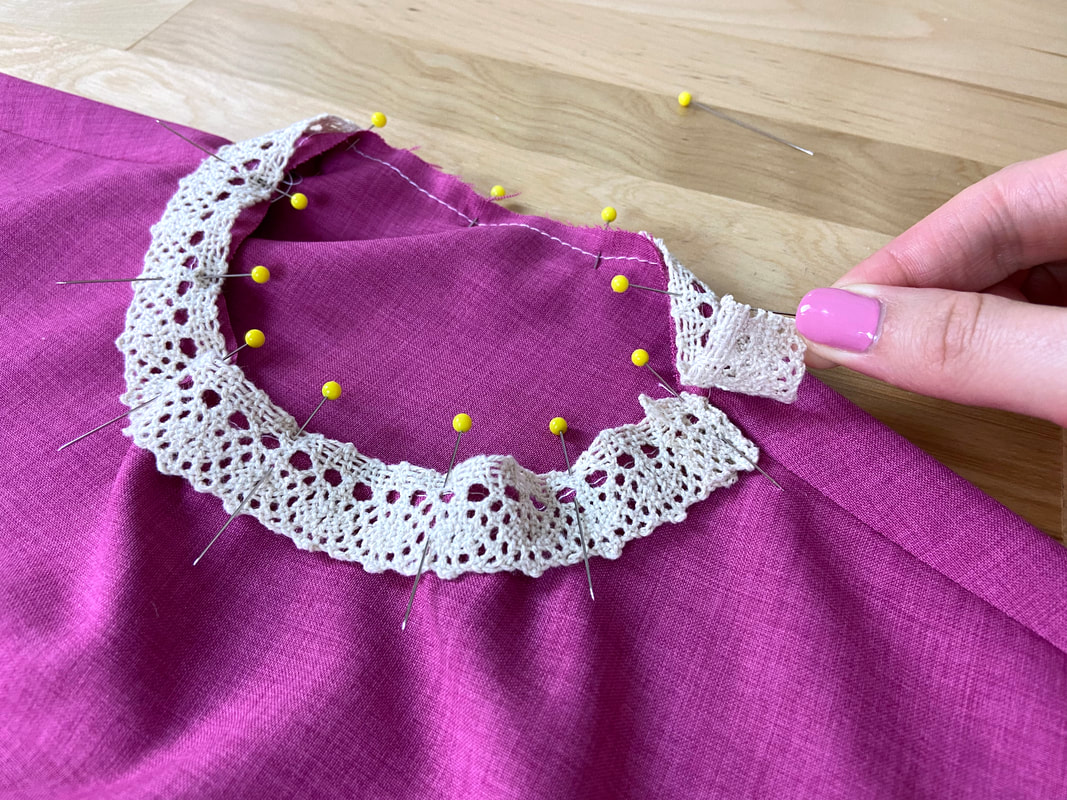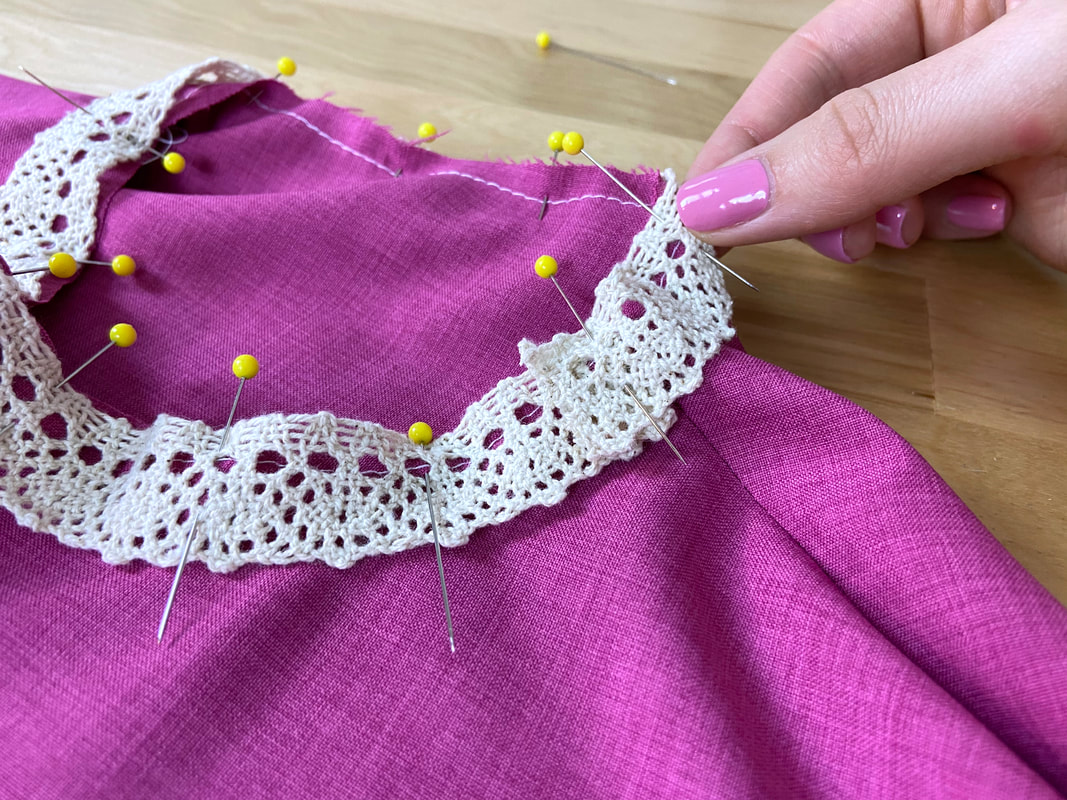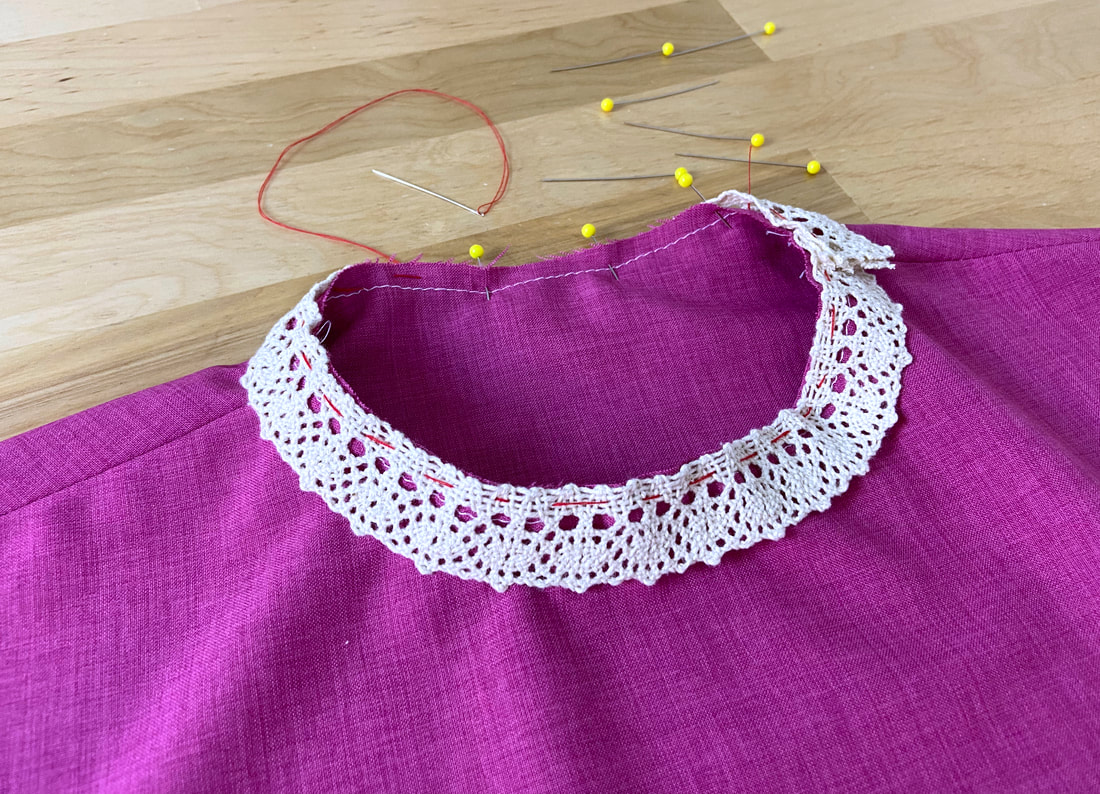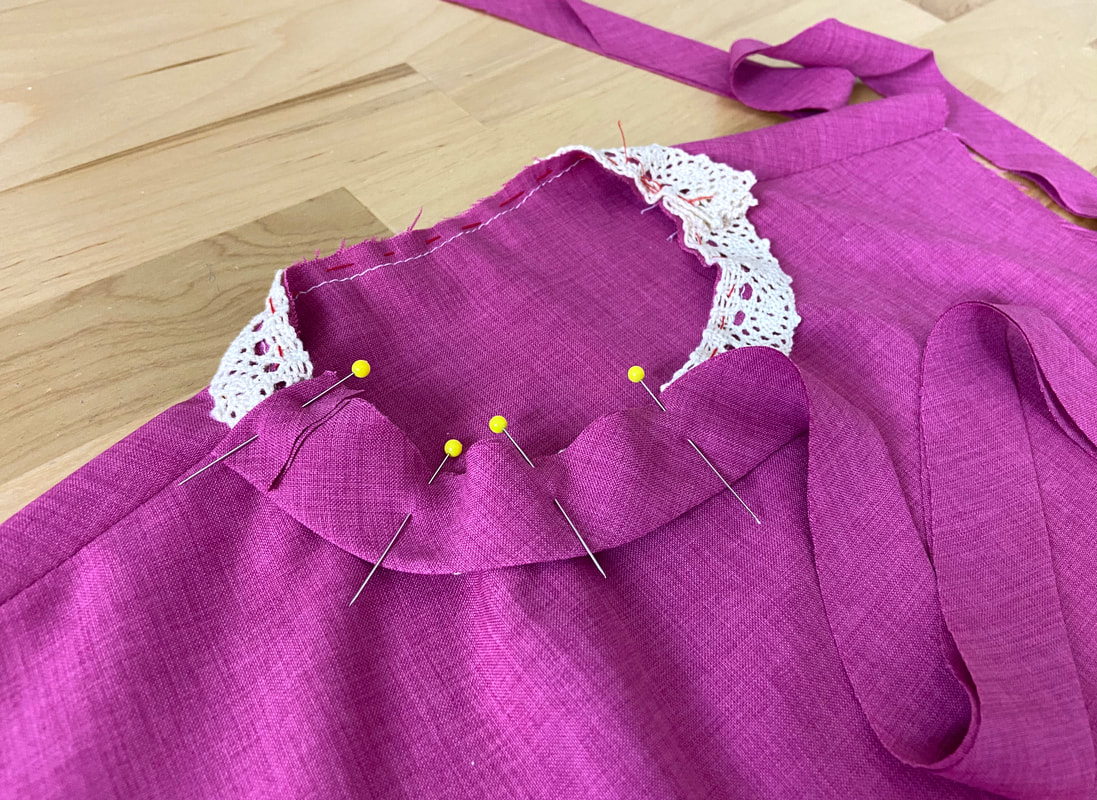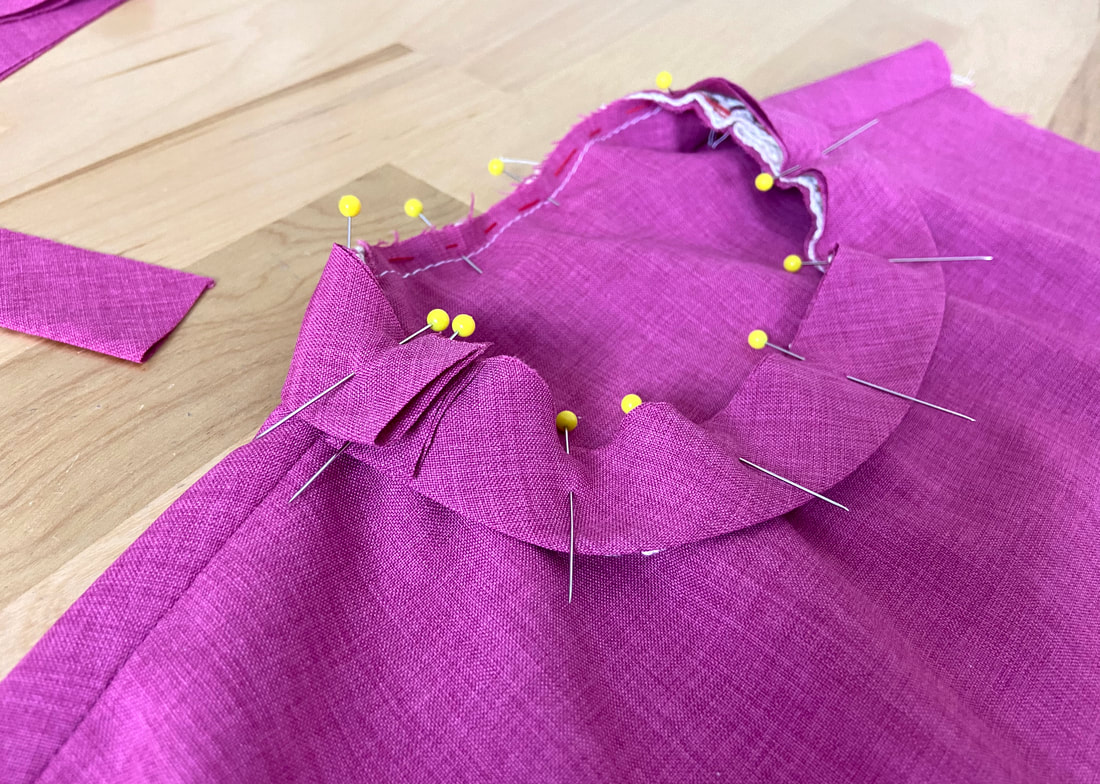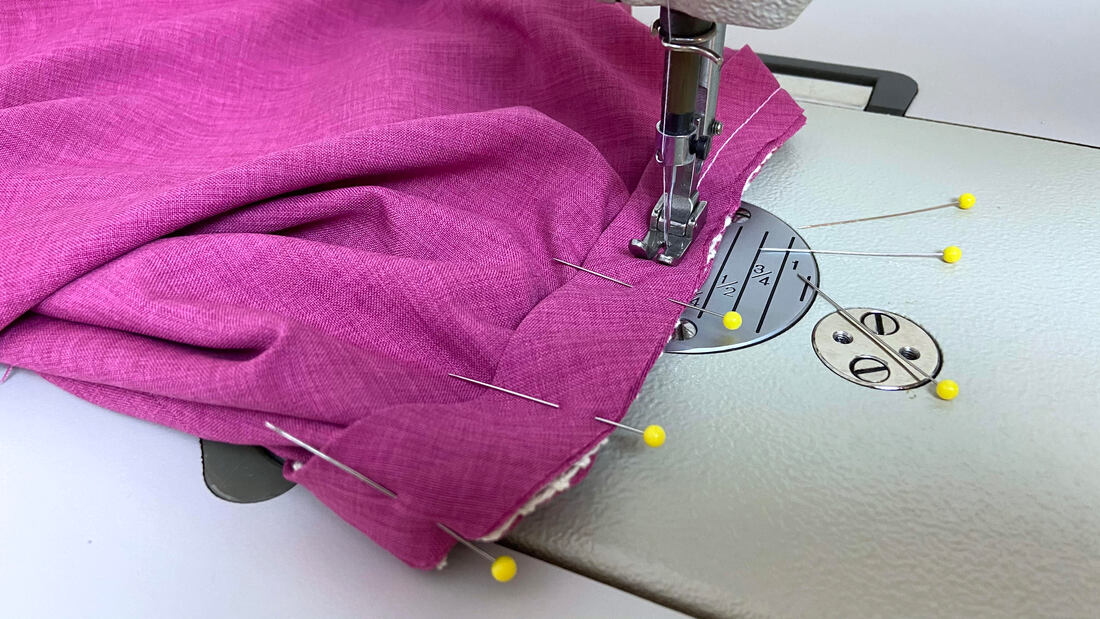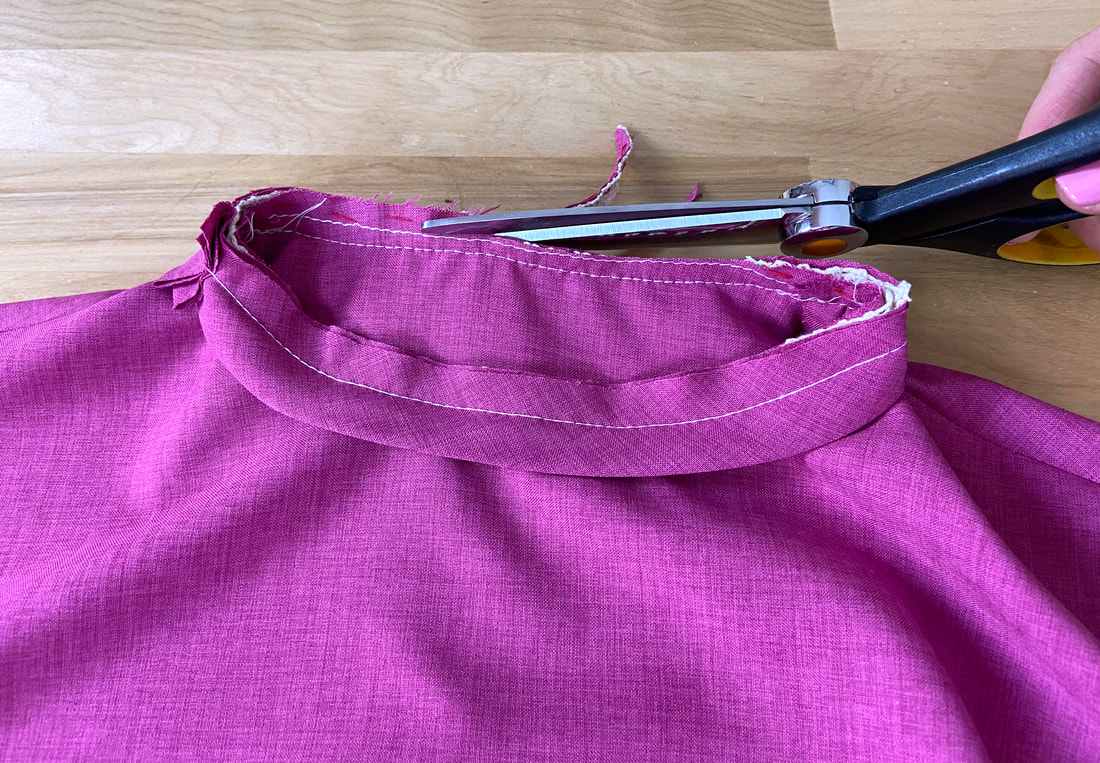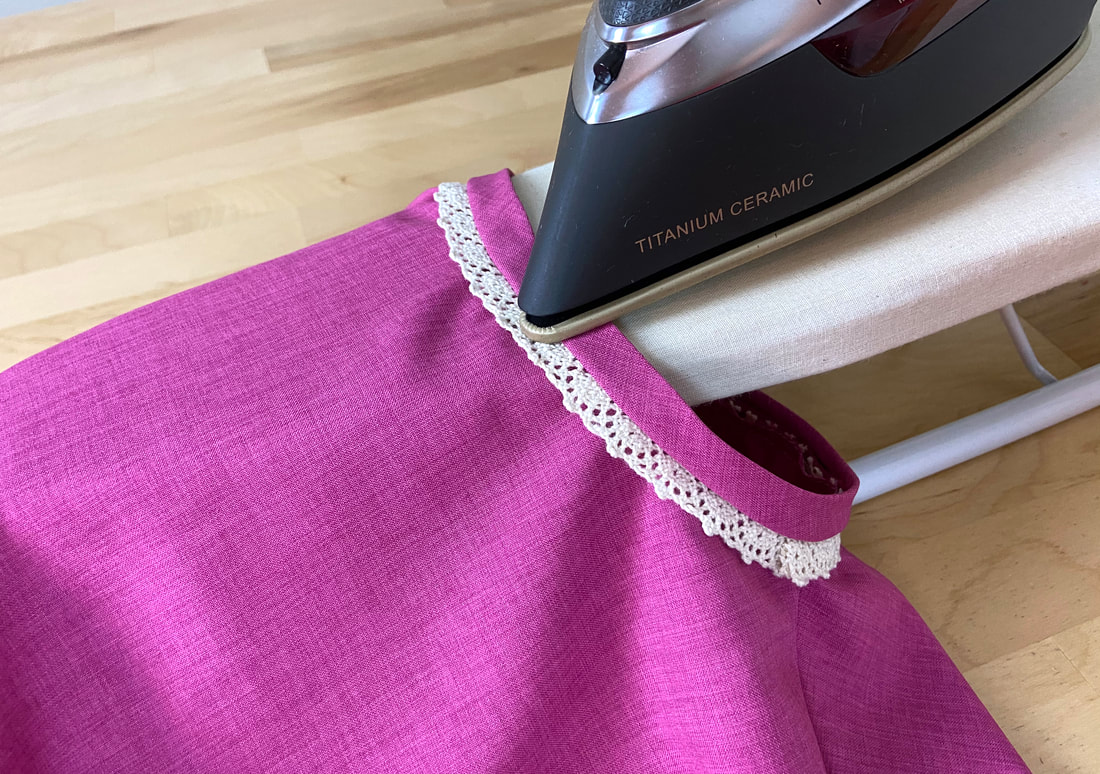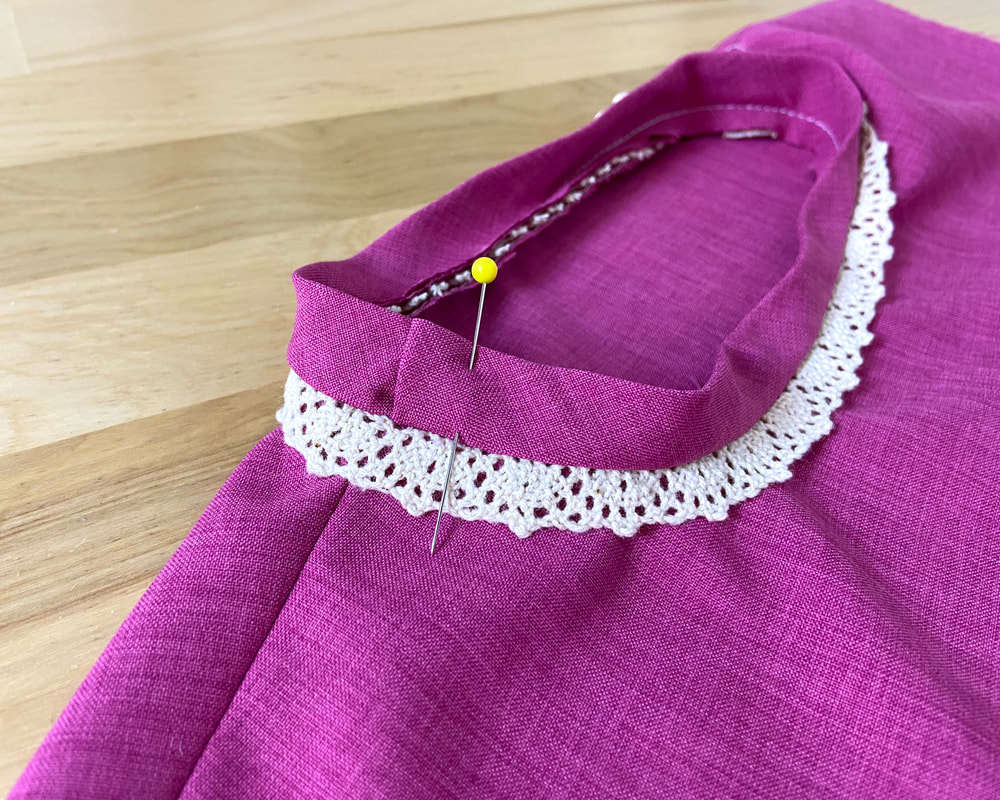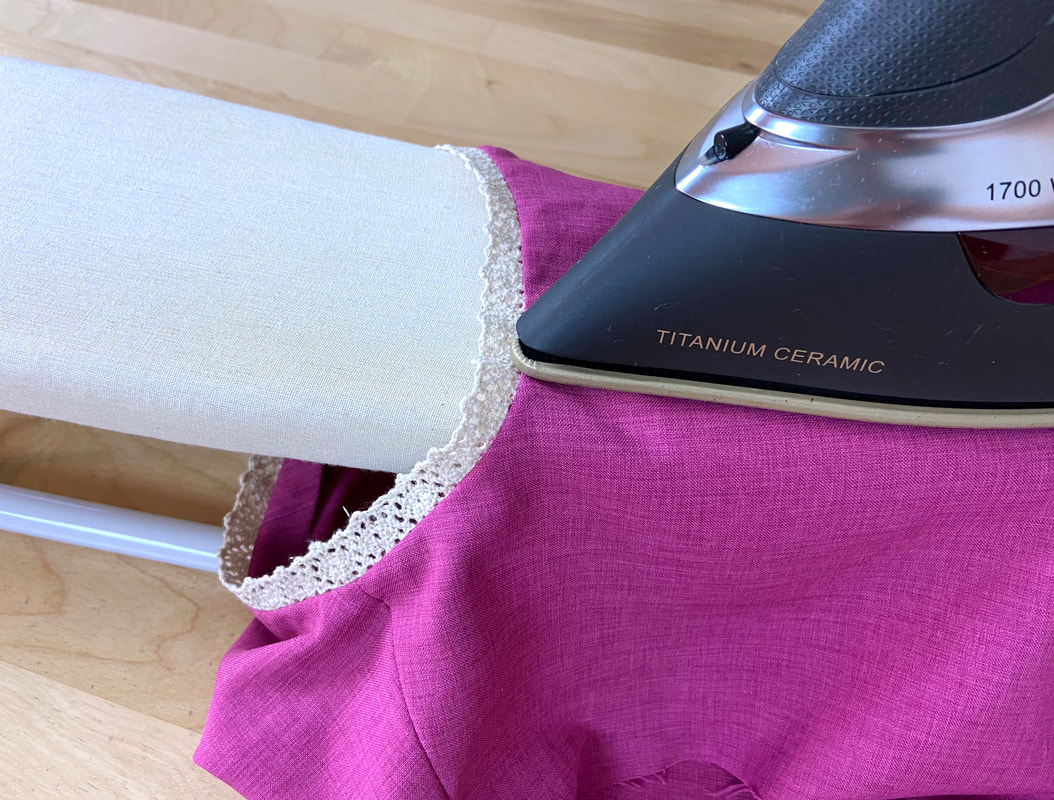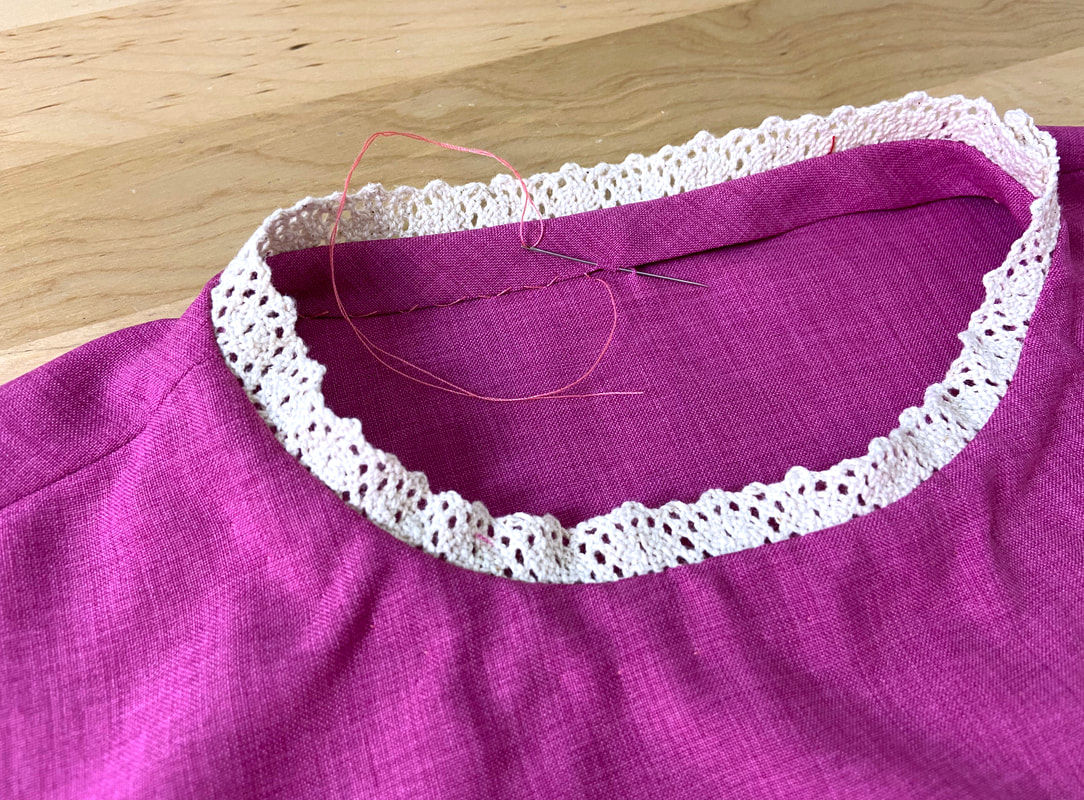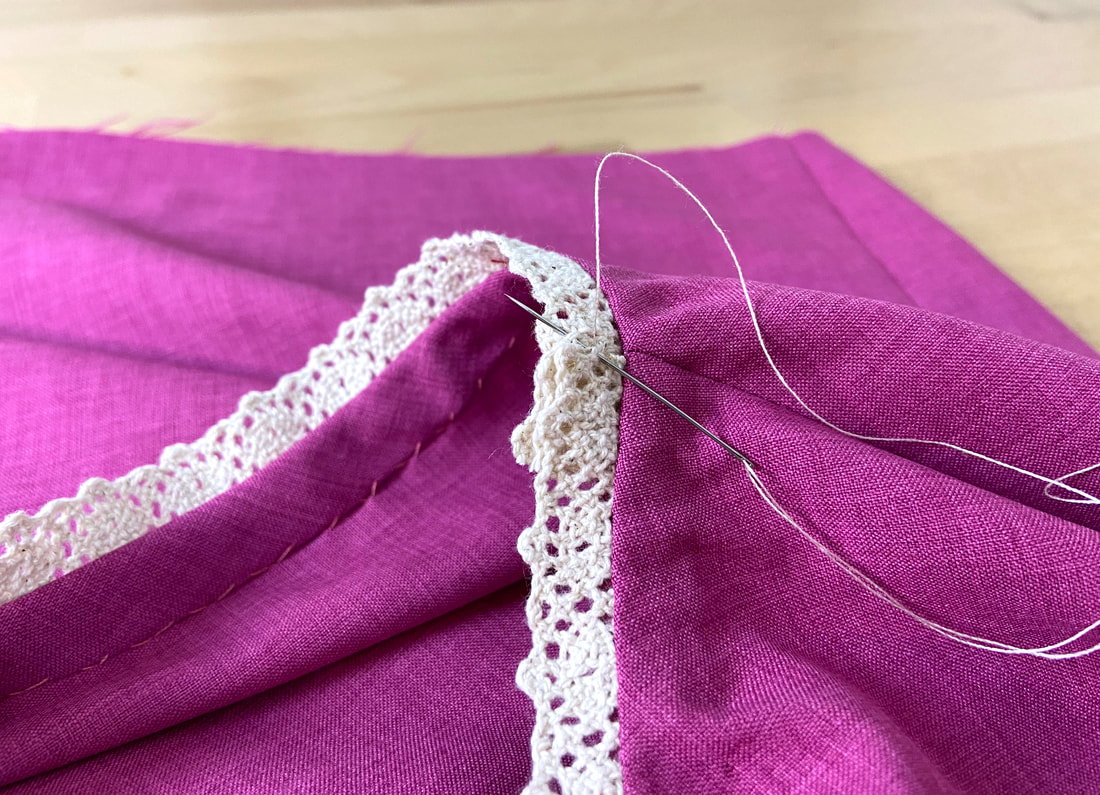To start with, it is important to use a trim that has at least one lengthwise edge that can be sewn into a seam.
Secondly, if sewing a trim into a seam, choose one that is not too thick and won’t add unnecessary bulk to the finished neckline. It is also important to consider the trim’s width. A narrower trim will lay flatter and be easier to sew along a curved edge.
In this tutorial, a 3/4”-wide crochet trim is used. The trim has a straighter, defined edge that can easily be aligned and stitched into a seam.
1. First, staystitch the garment neck edges prior to sewing any seams.
In this example, a double layer bias facing is used to finish the neck edge. Once attached, this bias facing will be turned under such that the added trim corresponds to the very top edge of the neckline.
A turned-under faced style requires that the neck edge has seam allowance. In this case, the seam allowance along the curved neckline edge is 1/2".
In this case, the initial bias fabric strip is cut at 2" wide. When folded and stitched in the application process, the finished bias facing will be 1/2" wide.
1. Start by marking and cutting the individual 2" fabric strips on the bias. To learn how to find the fabric's bias grain, check out this tutorial: How To Sew Continuous Bias Binding
2. Sew, iron and finish (if needed) the garment shoulder seams.
3. Assuming the garment's neckline has no opening, starting at the shoulder seam or center back seam (if your garment has one), place the trim face down such that its lengthwise edge (designated for seam stitching) is aligned with the neck's raw edge. The face sides of both garment and trim should be touching. Fold the trim end at about ½” and insert a pin horizontally to hold the trim and garment layers in place.
4. Continue pinning the trim to the neckline edge perpendicularly (as shown) until you arrive at the starting point- the intial folded end.
5. Overlap the end of the trim by about ½” and trim the excess off.
Note: If you are working with lace trim that does not unravel and the cut edges blend into each other seamlessly, you do not have to fold the starting point of the trim. Simply overlapping the trim's two ends should be sufficient for a clean-finished result.
6. Hand baste the trim to the neckline edge for extra stability. Doing so will provide a lot more control in the bias facing attachment process.
If the trim has beading or other similar decorative elements, use a zipper foot from this point on. A zipper foot will allow you to sew next to the trim’s raised edges.
7. At this point, treat the neckline as you would any other bias faced style. Align and pin the double layer bias facing to the neckline edge such that the trim is sandwiched in between. Fold and overlap the bias facing ends as shown.
8. Machine stitch through all layers at 1/2" seam allowance. Once stitched, trim the seam allowance down to 1/4" in order to minimize bulk and provide enough flexibility along the neckline's curve edge.
9. Iron the bias facing and its seam allowances away from the neckline as shown.
Note: To minimize bulk in the finished application, it is a good idea to have the binding ends overlap at the other shoulder seam and not the same one as the trim.
10. Fold the bias facing towards the inside of the garment and iron the seam. Placing the bias facing inwards will naturally align the trim along the neckline edge.
11. Slipstitch through the bias facing's folded edge and garment layer underneath. Once complete, carefully press the finished neckline seam. Avoid ironing directly on the trim, especially if it is made of heat sensitive fibers.
12. As a last step, slipstitch the trim’s starting fold to the trim layer underneath. Use matching-color thread for this step.
To learn how to slipstitch, follow the steps in this tutorial: Hand-Applied Blind Stitches

